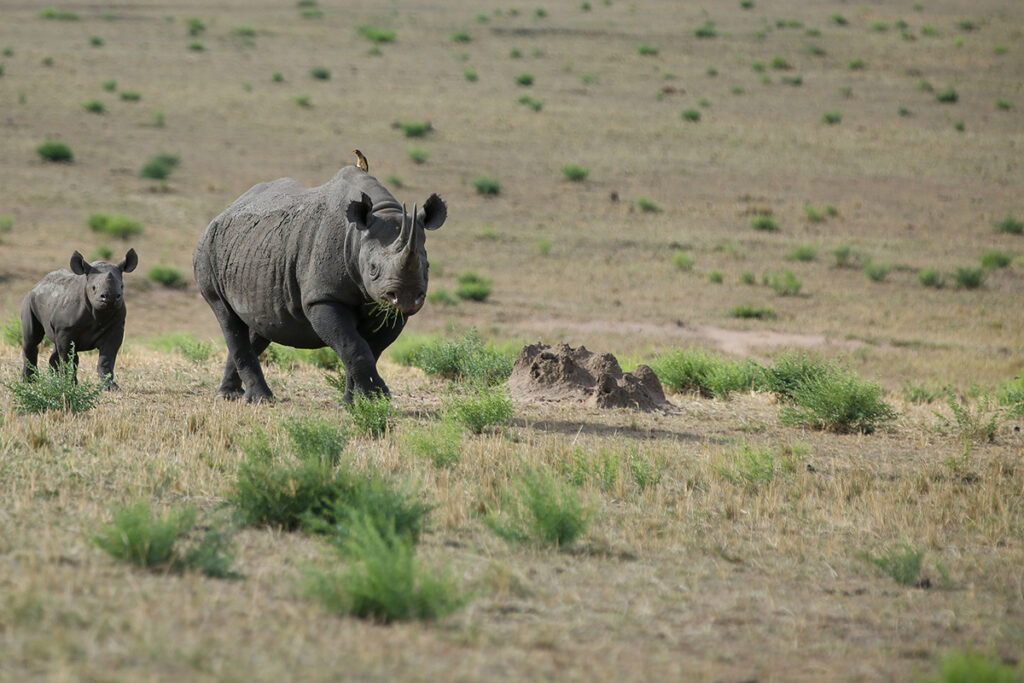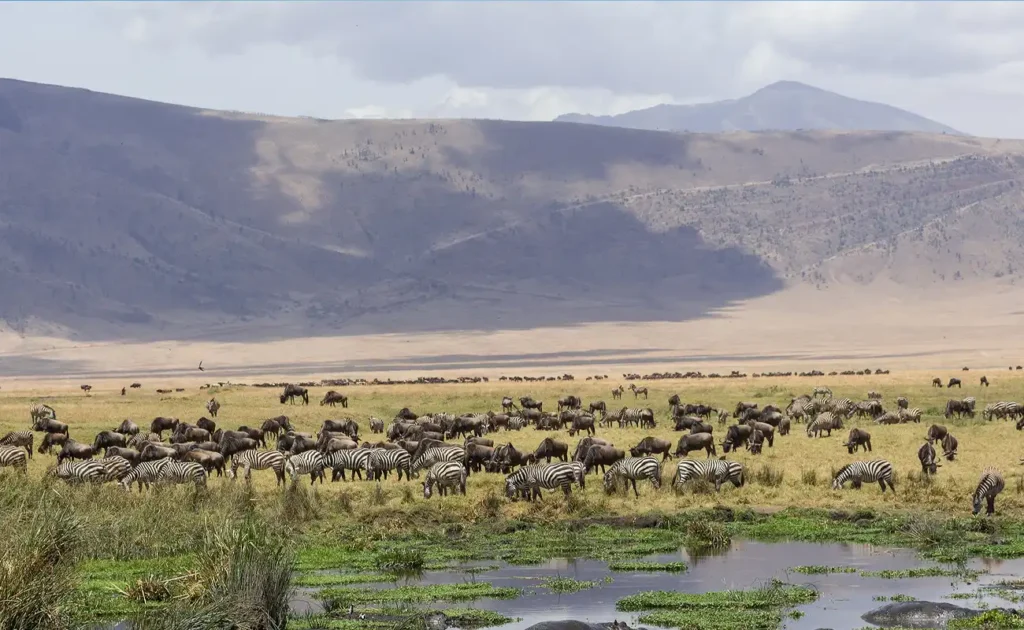Rubondo Island National Park stands as an unspoiled gem amidst the serene waters of Lake Victoria, often surprising visitors with its unique blend of terrestrial and aquatic wildlife. Spanning over 456 square kilometers, this pristine reserve is not just a refuge for elephants and chimpanzees but also a natural haven for countless bird species. Its appeal lies in its ability to offer an untouched, tranquil experience, often leaving experts in awe of its biodiversity.
The park’s intriguing history dates back to 1967, when the Tanzanian government decided to transform it into a sanctuary for endangered animal species. Today, it houses diverse flora and fauna, providing a critical habitat for rubondo-form chimpanzees that were introduced from European zoos. Notably, Rubondo reflects significant conservation efforts, with its unique ecological system supporting over 400 bird species, marking it a paradise for ornithologists and naturalists alike.

Essence of Rubondo Island National Park
Rubondo Island National Park is a tranquil paradise nestled in Lake Victoria. This park is unique due to its isolated location, providing a serene escape from the bustling world. The island, spanning over 456 square kilometers, showcases a diverse range of ecosystems. Dense forests, open grasslands, and swamps create varied habitats for a wide array of wildlife. It’s a place where nature thrives.
Visitors are often surprised by the rich biodiversity here. The park is home to endangered chimpanzees, elephants, and other exotic animals. According to this post, the island also shelters over 400 bird species. This makes it a bird-watcher’s dream, attracting enthusiasts from around the globe. The sight of colorful birds in the pristine environment is truly captivating.
Rubondo’s history dates back to 1967 when it was established to protect endangered species. Since then, it has been a beacon of conservation success. The government and various organizations have worked tirelessly to maintain its natural beauty. This has resulted in an increase in wildlife populations and a boost in ecotourism. Here is the article discussing the significant conservation efforts made.
Tourists can engage in various activities while visiting the park. From guided nature walks to boat safaris, there is something for everyone. Angling is also a popular sport thanks to Lake Victoria’s abundant fish species. Visitors can explore the lush landscapes and enjoy breathtaking views. Rubondo Island National Park offers an unmatched experience for nature lovers.
History and Foundation of the Park
The establishment of Rubondo Island National Park dates back to the late 1960s, during a time when conservation efforts were ramping up worldwide. In 1967, the Tanzanian government officially declared Rubondo Island a national park. The primary goal was to protect endangered animal species and preserve the island’s rich biodiversity. This initiative led to the relocation of various species to the island, creating a unique sanctuary. Today, Rubondo stands as a testament to these early conservation efforts.
One of the remarkable aspects of Rubondo’s history is the introduction of chimpanzees in the 1960s and 1970s. These primates were brought from European zoos and released into the wild to establish a stable population. According to this post, efforts to adapt the chimpanzees to their new environment were successful, and they now thrive on the island. This introduction not only aided in chimpanzee conservation but also added a unique element to the park’s ecosystem. Visitors today can witness the descendants of these pioneering primates.
Throughout the years, Rubondo Island National Park has been a focal point for numerous conservation initiatives. Various organizations have partnered with the Tanzanian government to protect the island’s natural resources. These efforts have aimed at safeguarding habitats, preventing poaching, and promoting sustainable tourism. The park’s success in these areas underscores the importance of collaborative conservation efforts. It’s a prime example of how proactive measures can lead to the preservation of wildlife.
The foundation of Rubondo also involved widespread ecological surveys and research. Scientists and conservationists mapped out the island’s diverse habitats and identified key species that needed protection. These surveys provided the groundwork for comprehensive management plans, ensuring the park’s ecological integrity. This methodical approach has been crucial in maintaining the balance between human activity and nature. Rubondo Island National Park continues to be a model for conservation and ecological research.
The Breathtaking Biodiversity at Rubondo Island National Park
Rubondo Island National Park is a biodiversity hotspot, teeming with an incredible array of plants and animals. The island’s diverse habitats, ranging from dense forests to open savannas, provide a home for countless species. Visitors can marvel at bustling mammalian life, including elephants, hippos, and even rare sitatungas. Among the primate population, chimpanzees are a major attraction, showcasing the success of conservation efforts. The island’s unique ecosystems support a balanced and vibrant wildlife community.
Bird watchers find Rubondo Island a paradise, as it hosts over 400 bird species. From the majestic fish eagle to the colorful kingfisher, the skies are alive with avian activity. The mix of terrestrial and aquatic environments creates ideal breeding grounds for these birds. Some migrate seasonally, adding even more variety throughout the year. Whether you’re a novice or a seasoned birder, every visit promises new and exciting discoveries.
The waters surrounding Rubondo Island are inhabited by rich aquatic life. Lake Victoria, one of the largest freshwater lakes in the world, boasts a plethora of fish species. Among the most famous are the tilapia and Nile perch, prized by both local fishermen and wildlife enthusiasts. Table:
| Fish Species | Notable Features |
|---|---|
| Tilapia | Popular for local dishes and supports local economy |
| Nile Perch | Renowned for its large size and game-fishing appeal |
The island’s flora is just as diverse, with a mixture of indigenous and introduced species. The lush landscapes are comprised of fig trees, mahogany, and striking wildflowers. These plants not only add to the island’s beauty but also provide essential resources for the wildlife. The vegetation plays a critical role in the park’s ecology, offering food, shelter, and breeding grounds. Together, the flora and fauna create a harmonious and self-sustaining environment.
Conservation Efforts and Success Stories
Rubondo Island National Park has been a significant focus for conservation efforts since its establishment. The park was initially intended to provide a safe haven for endangered species and reintroduce them into the wild. Over the years, these efforts have yielded remarkable results, safeguarding both flora and fauna. Various conservation programs have been implemented to support this mission. The collaborative work among scientists, conservationists, and the government has proved highly effective.
One of the most notable successes is the introduction of chimpanzees to the island. These primates were brought from European zoos in the 1960s and 1970s. Today, the chimpanzee population thrives, showcasing the effectiveness of these conservation strategies. Visitors can observe these fascinating creatures in their natural habitat, reflecting significant progress. This achievement highlights the importance of dedicated conservation measures.
To further protect wildlife, anti-poaching initiatives have been rigorously established. Poaching once posed a severe threat to many of the park’s species. In response, the government and various NGOs have set up patrol units to monitor and deter illegal activities. These strategies have led to a significant decrease in poaching incidents. The presence of well-trained rangers ensures that wildlife can flourish without human interference.
Rubondo also focuses on community-based conservation, involving local communities in the protection efforts. This approach fosters a sense of ownership and responsibility among the residents. Additionally, educational programs teach the importance of conservation and sustainable practices. Engaging locals in these initiatives has strengthened the overall impact. It’s a model that emphasizes cooperation and shared goals.
The park’s flora has equally benefited from conservation efforts. Numerous indigenous plant species have been preserved and restored, contributing to the ecological balance. Reforestation projects have been initiated to counteract deforestation and soil erosion. These projects not only enhance biodiversity but also improve the environment for the island’s wildlife. The green cover is steadily increasing, thanks to these concerted efforts.
Success stories from Rubondo include the recovery of certain bird populations that were previously at risk. Conservationists have worked hard to create optimal breeding conditions for these birds. Efforts such as habitat restoration and the establishment of protected breeding zones have been crucial. Today, the island boasts a rich and diverse birdlife. These successes underline the effectiveness of comprehensive conservation strategies.
Enthralling Safari Experience and Tourist Activities
Rubondo Island National Park offers a rich safari experience that captivates nature enthusiasts. The park’s unique setup allows for both traditional jeep safaris and boat safaris. Exploring by boat offers a closer look at the park’s remarkable aquatic life and the shores where hippos and crocodiles reside. Guided tours provide insightful information about the area’s flora and fauna. These excursions are both educational and exhilarating.
For those who prefer on-foot adventures, guided nature walks are available. These walks offer a more intimate encounter with the island’s environment. Guides share knowledge about the diverse plant species and the smaller, often overlooked wildlife. Walking trails wind through dense forests and along scenic pathways. This immersive experience allows visitors to connect deeply with nature.
Sit-atunga and bird watching are also popular activities within the park. Rubondo is a bird watcher’s paradise, with over 400 bird species to observe. The diversity of birdlife can be explored through dedicated bird-watching spots and platforms. Visitors often spot rare and migratory birds along the shores and within the forests. A successful bird-watching trip can be a highlight for many tourists.
Fishing in Lake Victoria is a major draw for many visitors. The lake is famous for its abundance of tilapia and Nile perch. Angling enthusiasts can participate in fishing expeditions organized by local guides. These trips not only provide great fishing opportunities but also splendid views of the surrounding landscapes. Fishing in the calm waters of Lake Victoria is a tranquil yet thrilling experience.
The park also boasts several accommodation options to enhance the visitor experience. From rustic camping sites to luxurious lodges, there is something to suit every budget and preference. The lodges offer comfort while ensuring guests remain close to nature. Staying overnight in the park allows visitors to experience the serene beauty of the island under the starlit sky. It’s a perfect way to conclude a day full of adventure.
The Role of Rubondo Island National Park in Tanzanian Ecotourism
Rubondo Island National Park plays a significant role in promoting ecotourism in Tanzania. The park’s pristine environment attracts nature lovers and conservationists from around the world. Its unique blend of land and aquatic habitats provides a rare opportunity to experience diverse wildlife up close. This rich biodiversity has made Rubondo a key destination on the ecotourism map. The park’s commitment to sustainability further enhances its appeal.
Ecotourism at Rubondo contributes to local economic growth by creating jobs and supporting local businesses. Guides, lodge staff, and service providers benefit from increased tourism activity. This involvement helps local communities recognize the importance of preserving their natural environment. By promoting sustainable practices, the park ensures that tourism does not harm its delicate ecosystems. The balance between tourism and conservation is carefully maintained.
The park’s success in ecotourism is largely due to its engaging activities and educational programs. Visitors can participate in guided tours, learning about conservation efforts and the significance of protecting the environment. These programs aim to inspire visitors to adopt sustainable practices in their daily lives. The park also collaborates with schools and organizations to promote environmental education. Knowledge sharing is a vital aspect of Rubondo’s ecotourism strategy.
Rubondo’s role in Tanzanian ecotourism extends beyond its borders. The park serves as a model for other conservation areas looking to develop sustainable tourism practices. Its achievements highlight the potential for responsible tourism to support both conservation and community development. Visitors leave with a deeper appreciation for nature and a commitment to preserving similar habitats elsewhere. Rubondo’s influence on ecotourism is both profound and enduring.
To encourage further growth, the park has been upgrading its facilities and infrastructure. Improved accommodations and amenities make it easier for tourists to enjoy their stay. Enhancements in accessibility have also opened the park to a wider audience. These developments are aligned with Rubondo’s vision to be a leading ecotourism hotspot in Tanzania. As interest in sustainable travel grows, Rubondo continues to set a shining example.

Frequently Asked Questions
Rubondo Island National Park, famous for its rich biodiversity, offers a unique glimpse into conservation and ecotourism efforts. Here are some frequently asked questions to help you understand more about this extraordinary destination.
1. What wildlife can be seen at Rubondo Island National Park?
The park is home to a variety of wildlife, including chimpanzees, elephants, and hippos. These animals thrive in the park’s varied habitats, from dense forests to savannas. Bird watchers will be thrilled by the more than 400 bird species residing in the park. Visitors also occasionally spot shy animals like the sitatunga antelope.
In addition to these, the surrounding waters of Lake Victoria host rich aquatic life. Fish species like tilapia and Nile perch are abundant, making the park ideal for fishing activities. The unique combination of terrestrial and aquatic wildlife offers a diverse and enriching experience for all visitors. Reptiles like crocodiles can also be seen along the shores.
2. How did the chimpanzees come to live in Rubondo Island National Park?
The chimpanzees on Rubondo Island were introduced in the 1960s and 1970s. They were relocated from European zoos as part of a conservation project. This project aimed to establish a stable, wild population of chimpanzees. The effort was highly successful, with the primates now thriving in their natural habitat.
This not only helped in the conservation of chimpanzees but also enriched the island’s biodiversity. Tourists now have the unique opportunity to observe these primates in the wild. The project is often cited as a model for successful animal reintroduction initiatives. The well-being of these chimpanzees is closely monitored by conservationists.
3. Are there guided tours available in the park?
Yes, Rubondo Island National Park offers guided tours to enhance the visitor experience. These tours are led by knowledgeable guides who provide insights into the park’s wildlife and ecosystems. Visitors can choose from a variety of tours, including jeep safaris, boat safaris, and nature walks.
Guided tours ensure a safe and educational journey through the park. They help in spotting wildlife and understanding the significance of conservation efforts. Engaging with a guide can make the visit more informative and enjoyable. They also tailor the tours to meet the interests and requirements of different groups.
4. What accommodations are available for visitors?
The park offers a range of accommodation options, from rustic campsites to luxury lodges. These accommodations are designed to suit different budgets and preferences. Camping enthusiasts can enjoy the natural surroundings, while those preferring more comfort can stay in well-appointed lodges.
Staying overnight allows visitors to experience the park’s serene beauty under the starlit sky. Facilities are equipped to ensure a comfortable and enjoyable stay. The lodgings also provide easy access to major park activities and tour starting points. This enhances the overall experience of exploring Rubondo Island National Park.
5. How does the park contribute to local communities?
Rubondo Island National Park plays a crucial role in supporting local communities. The park generates employment opportunities for residents, including roles in guiding, hospitality, and conservation. This economic support helps improve living standards and brings awareness to conservation efforts.
Additionally, the park’s educational programs engage local schools and organizations in environmental education. These programs emphasize sustainable practices and the importance of wildlife protection. The park’s involvement with the community fosters a cooperative spirit towards conservation. This collaboration ensures both the ecological and economic sustainability of the area.



